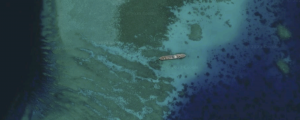A new regional military alliance in the Middle East may be in the offing if Israel’s prime minister gets his way. But what other alliances, pacts and blocs are already out there? Sputnik explores.

Israeli Prime Minister Benjamin Netanyahu proposed the creation of a new NATO-style military bloc in the Middle East dubbed the ‘Abraham Alliance’ during his trip to Washington this week, saying the coalition, arrayed explicitly against Iran, would include Israel, the United States, and any Israel-friendly Arab country wishing to join.
There is already more than a dozen alliances out there, with their purpose ranging from collective defense and intelligence sharing to attempting to enforce a certain “indispensable nation’s” hegemony on the rest of the world. Here’s what to know about them.
Five Eyes: The oldest actively functioning modern multilateral alliance in the world. Constitutes an intelligence-sharing bloc of five English-speaking countries – Australia, Canada, New Zealand, the UK and the US. Founded in 1943 during the Second World War. The alliance’s modern role includes the monitoring, surveillance and sharing of communications worldwide, including of member countries’ own citizens. Former NSA contractor-turned whistleblower Edward Snowden has characterized the Five Eyes as a “supra-national intelligence organization that does not answer to the known laws of its own countries.”
Inter-American Treaty of Reciprocal Assistance: A collective security pact between the United States and countries in Latin America and the Caribbean. Signed in 1947. Under the treaty, an attack on one member is treated as an attack on all and responded to accordingly. Current members include Argentina, the Bahamas, Brazil, Chile, Colombia, Costa Rica, the Dominican Republic, El Salvador, Guatemala, Haiti, Honduras, Panama, Paraguay, Peru, Trinidad and Tobago, and the US. Bolivia, Cuba, Ecuador, Mexico, Nicaragua, Uruguay and Venezuela have quit and denounced the treaty, leaving the so-called “hemispheric defense” pact full of gaps. In its current state, the bloc has a combined maximum strength of over 3.31 million military personnel, 2.84 million of that the US.
 Venezuela’s Foreign Affairs Minister Jorge Arreaza – Sputnik International, 1920, 13.09.2019
Venezuela’s Foreign Affairs Minister Jorge Arreaza – Sputnik International, 1920, 13.09.2019
Venezuela Says It Will Defend Itself After US Invokes 1947 Defence Pact
13 September 2019, 20:39 GMT
North Atlantic Treaty Organization (NATO): The largest and most controversial alliance in this list. Formed in 1949, ostensibly to defend Western Europe against a Soviet attack, NATO originally consisted of 12 members: Belgium, Canada, Denmark, France, Iceland, Italy, Luxembourg, the Netherlands, Norway, Portugal, the United Kingdom and the United States.
During the Cold War, the alliance expanded to include Greece, Turkiye, West Germany (later just Germany after 1990) and Spain.
In 1999, it began a controversial expansion into Eastern Europe (dubbed “a fateful error” by George Kennan, architect of the US post-WWII containment doctrine), swallowing up the Czech Republic, Hungary and Poland, and then Bulgaria, Estonia, Latvia, Lithuania, Romania, Slovakia, Slovenia, Albania, Croatia, Montenegro, North Macedonia, and finally Finland and Sweden. Combined strength: Approximately 3.42 million personnel.
Over 870,000 ground combat vehicles, 22,300+ aircraft and 2,050 ships, from tiny coastal defense boats and support vessels to aircraft carriers.
Although it regularly calls itself a “defensive alliance” pledged to defend any one of its 32 members if they come under attack, NATO has been repeatedly used as the go-to tool to enforce Pax Americana, particularly after 1991.
The alliance ran a series of naval blockades, no-fly zones, bombing campaigns and troop deployments in the former Yugoslavia in the 1990s, occupied Afghanistan between 2001-2021, and bombarded Libya in 2011 in support of rebels seeking to topple the Gaddafi government.
After the 2014 Euromaidan coup in Ukraine, NATO became actively involved in efforts to reform and provide security assistance to the Ukrainian military, culminating in a full-blown proxy war with Russia from 2022 onward.
 NATO expansion cover – Sputnik International, 1920, 20.03.2023
NATO expansion cover – Sputnik International, 1920, 20.03.2023
A Fateful Error: History of NATO’s Expansion
20 March 2023, 17:00 GMT
Peninsula Shield Force: The military arm of the Gulf Cooperation Council (a regional intergovernmental and economic union of six major Arabian Gulf states: Bahrain, Kuwait, Oman, Qatar, Saudi Arabia and the United Arab Emirates). Created in 1984 during the Iran-Iraq War and ostensibly intended to collectively respond to aggression against GCC members.
In practice, the alliance has been used for internal policing and interventions abroad, from putting down the Bahraini uprising in March 2011, to joining the NATO-led “no-fly zone” in Libya the same year, to a military intervention in the Yemeni civil war against the Houthis from 2015 onward. Peninsula Shield Force assets also took part in the US-led air war against ISIS.* Washington has actively sought to turn Peninsula Shield Force into its own pocket alliance, proposing the sale of US weapons to the bloc on a collective basis. Combined armed strength of nearly 460,000 military personnel.
Compact of Free Association: An international agreement with military provisions governing relations between the US, the Marshall Islands, the Federated States of Micronesia and Palau. Under the treaty, the US military can station troops and assets on the Pacific island nations’ territory in exchange for a commitment to defend them against external aggression. Signed between 1982-1983 and set to expire in 2043 unless prolonged.
AUKUS: Another Anglosphere security pact between Australia, the UK and the US, signed in 2021 and touted as a military technology partnership to provide Australia with the means to build nuclear-powered submarines, but also promising expanded cooperation on other technologies with security and defense applications, from cyber defense and AI to missile defense and electronic warfare.
China has characterized the alliance as a Cold War holdover designed to exploit loopholes in the Nuclear Non-Proliferation Treaty. The alliance has been criticized extensively by France, which was robbed of a $66 billion submarine contract with Canberra.
 A U.S. marine packages USAID supplies bound for cyclone devastated Myanmar at the Utapao Air Force base near the southern city of Rayong, Thailand, Wednesday, May 14, 2008 – Sputnik International, 1920, 09.04.2024
A U.S. marine packages USAID supplies bound for cyclone devastated Myanmar at the Utapao Air Force base near the southern city of Rayong, Thailand, Wednesday, May 14, 2008 – Sputnik International, 1920, 09.04.2024
Is US Plotting Electoral Coup in Solomon Islands?
9 April, 02:00 GMT
Collective Security Treaty Organization: A Eurasian intergovernmental alliance formed in 1992 and consisting of six ex-Soviet Republics, including Armenia, Belarus, Kazakhstan, Kyrgyzstan, Russia and Tajikistan. The CSTO provides for collective defense against external aggression.
Azerbaijan, Georgia and Uzbekistan quit the organization between 1999 and 2012. Armenia suspended its participation in the bloc in February and has promised to quit, but has not yet done so.
Combined strength of roughly 1.6 million active duty personnel, plus over 3.8 million reserves and 715,000+ paramilitaries. These forces include a rapidly deployable peacekeeping force of about 3,600 troops.
Russia-Syria-Iran-Iraq Coalition: An intelligence sharing pact between Russia, Syria, Iran and Iraq, as well as Lebanon’s Hezbollah formed in 2015 against ISIS and other jihadist groups in Syria and Iraq at the zenith of the terror groups’ power.
Syrian President Bashar Assad lauded the coalition’s role in achieving “real results” against the terrorist threat against the background of the US-led coalition’s bombing, which only seemed to have increase the territories under terrorist control. The coalition has been dormant following ISIS’s defeat in 2019, but has not been disbanded.
 Russian President Vladimir Putin and Syrian President Bashar al-Assad attend a meeting at the Kremlin in Moscow, Russia. – Sputnik International, 1920, 25.07.2024
Russian President Vladimir Putin and Syrian President Bashar al-Assad attend a meeting at the Kremlin in Moscow, Russia. – Sputnik International, 1920, 25.07.2024
Putin, Assad Meet in Kremlin, Discuss Worsening Regional Situation Affecting Syria
25 July, 09:19 GMT
Nordic Defense Cooperation: A defense cooperation pact formed in 2009 consisting of Denmark, Finland, Iceland, Norway and Sweden, ostensibly designed to strengthen member states’ defense capabilities. The bloc’s continued existence has been questioned after Finland and Sweden joined NATO in 2023 and 2024, respectively.
Quadrilateral Security Dialogue: A strategic security forum founded in 2007 that went defunct in 2008 but was revived in 2017. The QUAD consists of four members: Australia, India, Japan and the US.
Positions itself openly as a bloc designed to counter China “militarily and diplomatically” in the Indo-Pacific, including the disputed South China Sea. Members hold regular, large-scale joint exercises and consult on their “shared commitment to a free and open Indo-Pacific” and a “rules-based maritime order.”
 The Philippine transport ship RMS Sierra Madre deliberately grounded on Second Thomas Shoal in the South China Sea – Sputnik International, 1920, 22.07.2024
The Philippine transport ship RMS Sierra Madre deliberately grounded on Second Thomas Shoal in the South China Sea – Sputnik International, 1920, 22.07.2024
Philippines, China Agree on Principles for De-Escalation in South China Sea – Ministry
22 July, 01:26 GMT
Central European Defense Cooperation: A defense cooperation pact established in 2010 and consisting of six countries: Austria, Croatia, the Czech Republic, Hungary, Slovakia and Slovenia.
The bloc shares roughly the same borders as the core of the old Austro-Hungarian Empire, and its main practical purpose has been to pool and share resources and information during the 2015-2016 European migrant crisis to fortify members’ common borders using military resources.
Lublin Triangle: A Lithuanian-Polish-Ukrainian security, economic and political cooperation pact formed in 2020, ostensibly to support Ukraine’s integration into NATO and the European Union, including bringing Ukraine’s military up to NATO standards. After the escalation of the Ukrainian crisis in 2022, the bloc has lobbied the further expansion of NATO deployments in Eastern Europe.
The pact does not stipulate joint defense. A similar agreement known as the British-Polish Ukrainian Trilateral Pact was signed in February 2022 to send weapons to Ukraine and provisions for cyber defense and energy security.
Alliance of Sahel States: A mutual defense pact-turned confederation of the African nations of Mali, Niger and Burkina Faso.
Created in September 2023 and formally established as a confederation on July 6 of this year following French forces’ expulsion from the Sahel, the pact provides for mutual defense, counterterrorism cooperation, and more broadly – the pooling of economic resources, the formation of a common market, a monetary union and ultimately – a single state. Combined armed strength of about 85,000 troops.
 Supporters of Niger’s ruling junta, gather for a protest called to fight for the country’s freedom and push back against foreign interference, in Niamey, Niger, Thursday, Aug. 3, 2023. – Sputnik International, 1920, 12.04.2024
Supporters of Niger’s ruling junta, gather for a protest called to fight for the country’s freedom and push back against foreign interference, in Niamey, Niger, Thursday, Aug. 3, 2023. – Sputnik International, 1920, 12.04.2024
What Sahel? Russian Troops Replace French in Niger
12 April, 18:15 GMT
By Ilya Tsukanova
Published by Sputnik Globe
Republished by The 21st Century
The views expressed in this article are solely those of the author and do not necessarily reflect the opinions of 21cir.com
* A terrorist group outlawed in Russia and many other countries.
